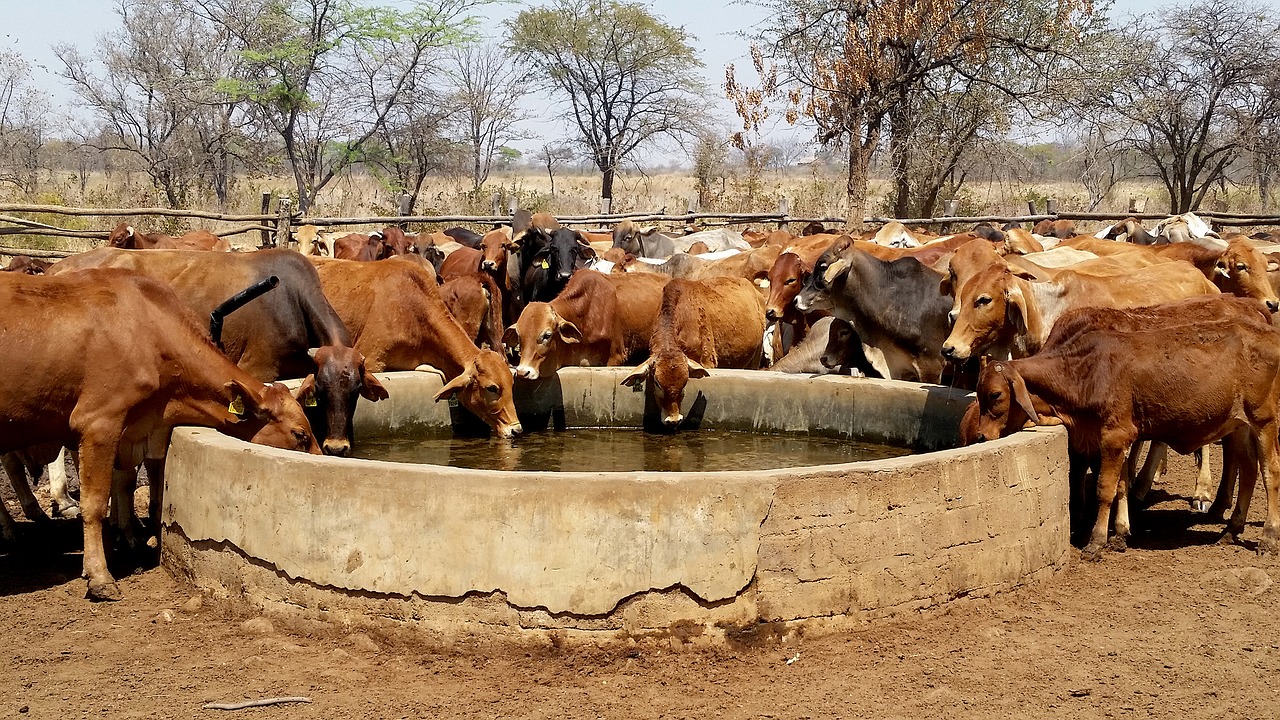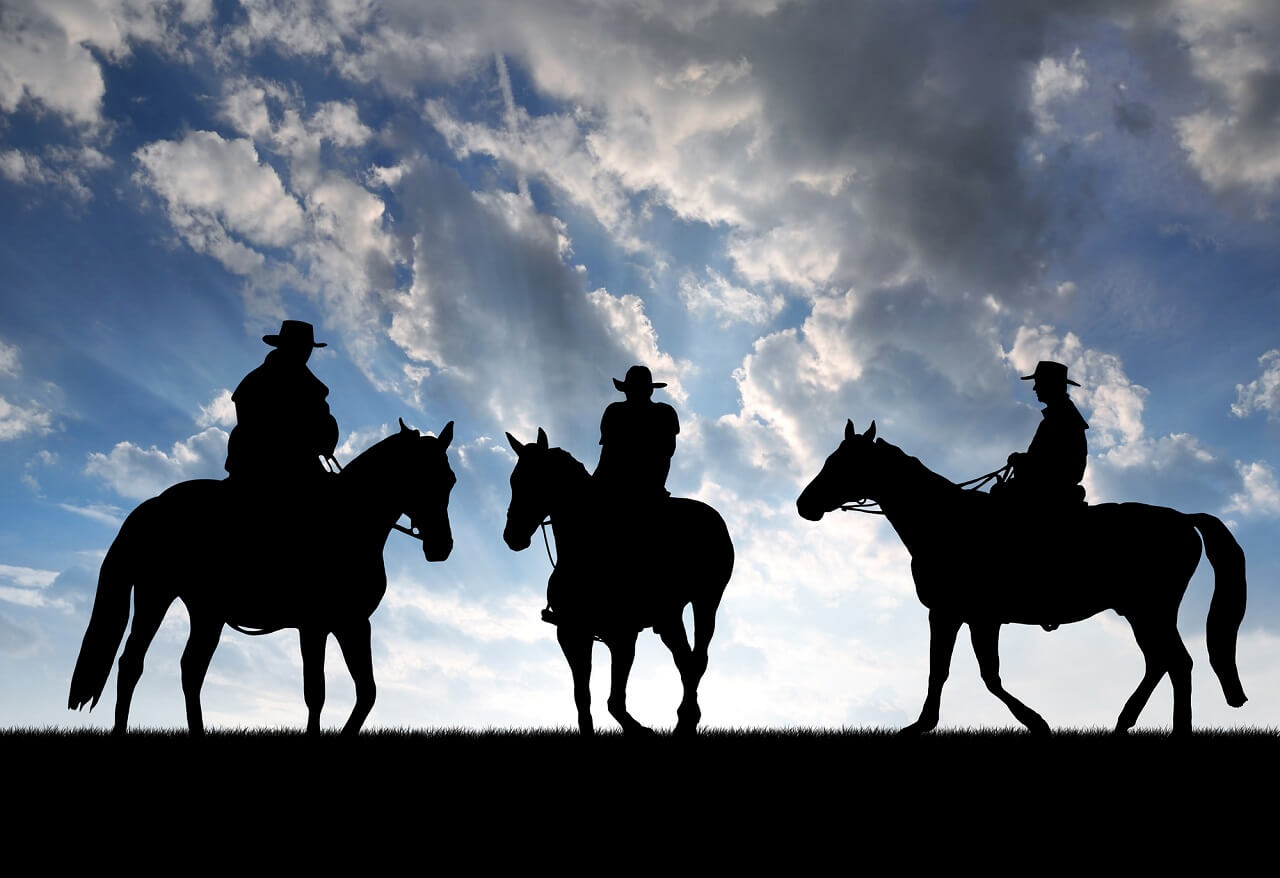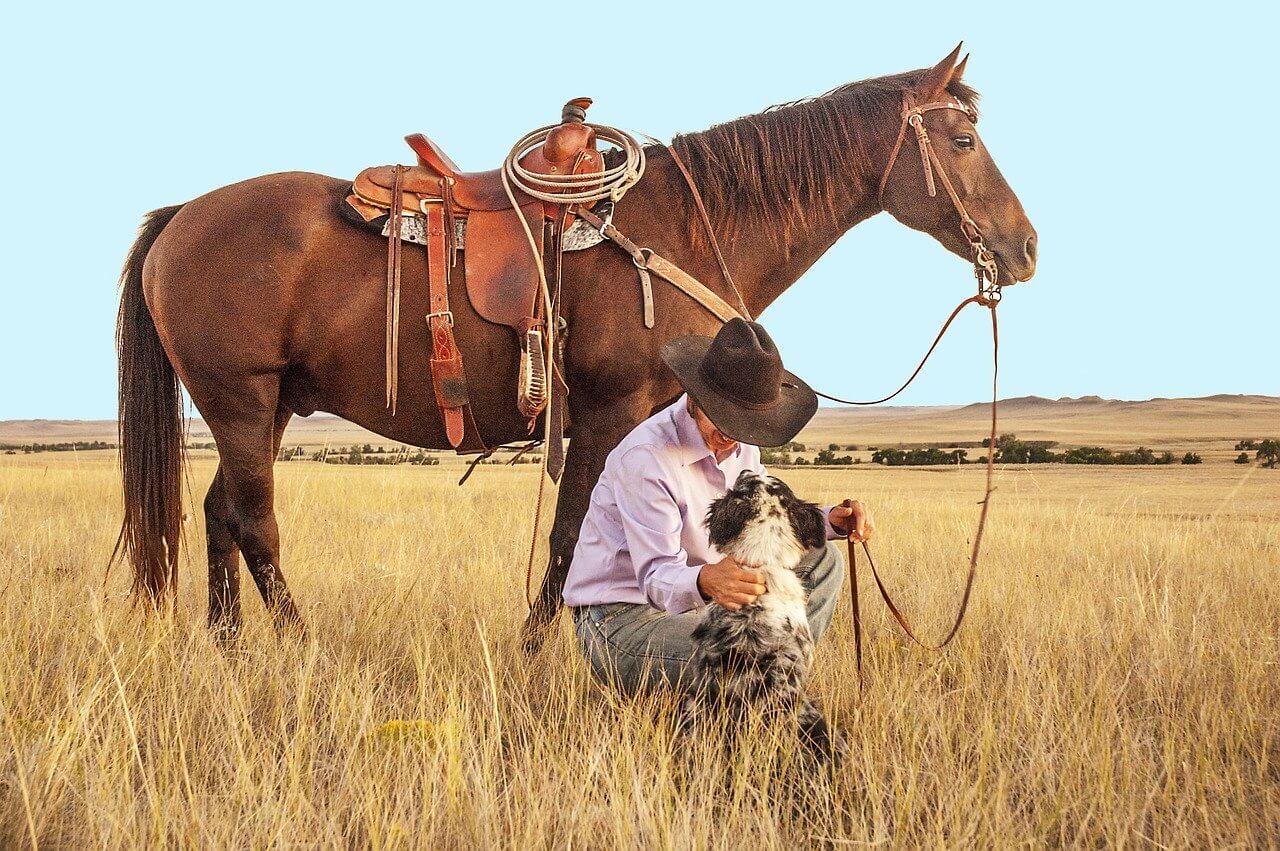how to become a rancher
A cattle ranch is a small or large landholding that has the focused purpose of breeding and raising cattle. Cattle are useful form of livestock that can be bred as show animals, milk producers, meat producers and producers of leather. In this article, we discuss how to start a cattle ranching business. Read on to learn more.
What You'll Learn Today
- How Do I Become A Rancher? What To Expect?
- Getting Started Involves Few (if any) Cattle
- How To Start A Cattle Ranching Business
- 1. What will it cost?
- 2. Who is my target market?
- 3. What can I sell?
- 4. How much do I need to charge to turn a good profit?
- 5. What should I call my ranch?
- 6. How can I build name recognition?
- 7. How can I make it all legal?
- How To Start A Cattle Ranch From Scratch
- 1. How much land will you need?
- 2. Think about the climate
- 3. Create a firm plan for land maintenance and improvement
- 4. Establish your finances
- 5. Remember that insurance is an absolute must
- 6. Budget for your taxes
- 7. Get proper licenses and permits
- Where Can You Get Money to Get Started?
- Manage Your Start Up Money In A Businesslike Manner
- Plan for the Future!
- You'll also want to set aside some money for advertising and marketing
- Why Should You Become A Cattle Rancher?
- What is Cattle Ranching Like?
- Resources:
- What is Cattle Ranching Like?
How Do I Become A Rancher? What To Expect?
Getting Started Involves Few (if any) Cattle
Starting a cattle ranch is very much like starting any other sort of business. There are specific steps you must follow to plan your business, register it correctly, and take care of all necessary procedures.
How To Start A Cattle Ranching Business

It's very important for any entrepreneur to set out a clear, doable business plan. When you take the time to set up clear, achievable goals and objectives, you can be sure of not skipping any necessary steps. Ask yourself:
1. What will it cost?
You'll need to identify the specifics of your startup costs and your ongoing costs.
2. Who is my target market?
Luckily, beef and dairy farming have a very broad target market. Basically anyone who consumes animal products such as milk and meat or who uses leather belongs in your target market. Your target demographic includes individuals, packaging companies, beef suppliers and more.
Additionally, other farmers and ranchers who may be in the market to buy livestock are part of your target market. Furthermore, if you happen to have a very fine bull, stud fees expand your target market.
3. What can I sell?
When you first start out, you may want to limit the number of products and services you offer, but as you become more comfortable you can begin to branch out and produce more products. This will naturally increase your profits.
In addition to the possibilities we have already mentioned, you may wish to provide farm tours and offer classes in activities such as:
- Cheese making
- Butchering
- Cooking
- Milking
You can show your cattle at local fairs and other events as a form of advertising for your business and as a way of perhaps winning some cash prizes.
You can package and sell aged cow manure, and you can use aged cow manure to grow fruits and vegetables which you can sell.
4. How much do I need to charge to turn a good profit?
When determining your prices, you'll need to take a number of factors into account. Among them are:
- The amount the market will bear
- Your needed profit margin
- Your clients needs
- Your costs
Generally speaking, a well-managed cattle ranch can expect to make between 24 and 33% profit per head. This will vary depending on what types of products you're selling, the demand for them, your pricing and the size of your ranch.
5. What should I call my ranch?
It's very important to give your ranch business the right name. As a sole proprietorship, you may wish to create a business name that does not disclose your identity.
If you have a name in mind, you should set up a website right away and claim your domain name quickly to be certain that it is taken by someone else.
Make sure that you don't take a name that already belongs to another business. You can verify this by visiting your local courthouse and examining state business records, state and federal trademark records, as well as web domain availability and social media platforms.
6. How can I build name recognition?
In addition to naming your business, you'll need to develop your brand. Your brand symbolizes your company's purpose and creates a recognized perception by the general public. When you have a strong brand, your business will be immediately recognizable.
A good brand begins with a good, clear, recognizable and pertinent logo. Search for logo generating services online, or higher a designer to help you create this logo.
Once you have a good, clear logo design, you will want to pursue an advertising campaign both in print, online and in person within your community.
Be sure that your business is listed in local print directories as well as websites of local businesses that are related.
In addition to your own website, you should also have active, up-to-date and social media sites. Your logo should appear on all your print materials, your online activities and on your vehicles. Create branded clothing and other merchandise for use by your employees and for sale or as giveaways to the public.
7. How can I make it all legal?
Once you have your cattle ranch name, you'll want to become a legal entity. Choose the business structure that will best suit your goals and objectives. For example you may want to be a:
- Limited Liability Company (LLC)
- Proprietorship
- Corporation
- Partnership
Seek legal advice to make this choice. The purpose of establishing yourself as a legal business entity is that it protects you personally from being held liable if your business is sued.
How To Start A Cattle Ranch From Scratch

Once you have all the formalities out of the way, or at least considered, you can focus on the physical aspects of starting up your cattle ranch.
Starting up a cattle ranch (or buying one) requires a fairly large chunk of change. Not only do you need enough property to own a good number of large animals, you must pay for the animals as well.
Think about these things as you plan your starting budget:
1. How much land will you need?
To determine this, you must think about a wide variety of factors. For example, if you have challenging topography, you will need more land to feed the same number of cattle as you might be able to on a smaller piece of more productive land.
When choosing land, your finances may limit the amount and quality of the land available to you. When this is the case, be sure you don't overdo your stock. Only run the number of cattle that your land will support.
If you're working with poor quality land, you'll need to include land improvement in your budgeting and work steadily towards increasing the quality and the amount of property available to you.
2. Think about the climate
If you have a short growing season, your grazing season will be short. Consider the type of vegetation that grows well in your area, and determine how much of your animals' needs can be met by grazing.
3. Create a firm plan for land maintenance and improvement
Remember that the more you improve the property you have, the more profits you will eventually turn. Projects you must plan and budget for include:
- Parasite control: If you're working with a limited amount of land, you may not be able to manage manure in a way that controls parasites effectively. You must be very realistic about this.
- Effective fencing: Even if you do it yourself, fencing materials can be costly, and it is absolutely necessary that you have a good strong fence to hold these large and powerful animals and to keep them safe from predators and theft.
- Water availability: Look for land that has a good source of water, and be sure that bringing in water or piping in water is easy for you at your chosen location.
- Equipment and materials: Do you have the equipment and tools you'll need? You want to be sure that you have all of the paraphernalia necessary for managing your animals and taking care of your land. You may need to look around for used equipment to save money and yet still have what you need for maintaining and repairing fences, outbuildings, roads and so forth.
- Is there shelter in place? If you plan to raise beef cattle, thick stands of trees, natural outcroppings and the like may suffice as shelter for your animals, depending on the climate. If you're going to raise dairy cattle, you'll need a good, sturdy, secure dairy barn.
- Other: Black tail jackrabbits that live in the open grasslands of the Western United States can pose a problem. It's recommended to have a solid plan how to deal with them if your ranch is their area.
4. Establish your finances
Whether you start out with a bank loan, savings, an inheritance or other source, you'll need money for your initial purchase and your operating expenses.
If you're going to have workers, you'll need to be able to pay them, even during the first few months when money may be short. You'll need to make sure that you have money on hand to take care of your payroll and your initial starting expenses.
5. Remember that insurance is an absolute must
All sorts of things can happen to negatively impact your herd and your landholdings. Be sure that your budget includes getting insured before you set out.
Be sure to get ample insurance to protect your business against any covered losses. At a minimum, you will need general liability insurance. You may also need Worker's Comp. In fact, you may be required to carry workers compensation by your state if you have employees.
6. Budget for your taxes
Find out what sort of state and federal taxes you will need to pay, and register accordingly. To do this you will need to go to the IRS website and acquire an EI in number. This number acts as your business's Social Security number. It applies only to your business and not to you.
7. Get proper licenses and permits
Check with your county, city and state to be sure that you have applied for and obtained all the licenses and permits necessary for the venture that you have in mind. If you do not do so, you may find yourself facing some big fines, or you may even have to shut down.
Where Can You Get Money to Get Started?
If you're planning on starting up a medium-sized ranch, you will need roughly $650,000. Luckily, ranching is an occupation that is very often eligible for assistance from the federal government in the form of grants and loans. Visit the USDA website for information on this type of funding.
There are also specific programs available for ranchers and farmers who are just starting out, and it's worth noting that there are quite a few programs specifically targeted toward women seeking to take up ranching and farming.
The cattle industry is an ever-growing industry that currently generates 13 billion dollars of profit per year. Ranching is an important pursuit that ensures a strong food chain in your county, state and possibly and across the nation.
This is why there are so many government subsidies available for cattle ranching. Look into funding for a wide variety of common needs, such as:
- Machinery
- Fertilizer
- Seed
Manage Your Start Up Money In A Businesslike Manner
In the interest of keeping your business dealings separate from your personal dealings, you must open dedicated banking and credit accounts for your business. Be very careful not to mingle your funds as this can cause a great deal of harmful confusion.
If your business accounts and your personal accounts are mixed, your own possessions, such as your vehicles, your home and any valuables you may have could be at risk if you are sued.
Additionally, it's important that you build business credit as opposed to your personal credit. Your business accounts should have better interest rates than your personal accounts, and, you may be able to get more credit as a business than as yourself.
Keeping all of your business dealings separate or separate bank accounts and credit accounts helps build a good credit history for your ranch. This can be very helpful as your ranching venture grows and expands.
One very important aspect of good financing is to keep detailed and accurate records on every aspect of your ranching pursuits. For example, you'll need to keep good records of:
- Vaccination
- Calf births
- Purchases
- Finances
- Breeding
- Assets
- Sales
Doing so will help make tax filing easy, and it will help you make realistic plans.
Plan for the Future!
In addition to clearly enumerating your startup costs, you will need to have a firm and realistic grasp on your ongoing expenses.
The cost of feed makes up about a quarter of a ranch annual budget. You'll also need to take into account your payroll, utilities and any loan repayments you need to make and a wide variety of expenses such as:
- Structural maintenance
- Maintenance expenses
- Veterinary expenses
- Repair expenses
- Medical care
In addition to keeping a strong business credit rating, you must always have a good nest egg set aside because there are many factors that are out of your control that could have a strong impact on how much profit you can turn.
Remember that ranching is an outdoor business, so inclement weather can hit you hard. Additionally, if government policies change unexpectedly, you may lose support.
You'll also want to set aside some money for advertising and marketing
As a cattle rancher, you may not feel qualified to create a website; however, you may be wrong in your self assessment. Today there are many good website development sites that can walk you through the process of creating a very attractive website.
If you don't feel confident to do this, you can always hire a web developer or web designer to take care of this task for you. The bottom line is you need to have website. It's not possible to do business of any kind these days without a strong online presence.
You also want to have a Facebook business page (not your personal page) and a Twitter presence. You may also wish to have a YouTube presence. As a caveat, don't get started on any of these social media sites if you don't intend to post regularly. Adding regular content is the key to success.
Website building sites.
- Square Space
- WordPress
- Shopify
- Weebly
- WIX
Why Should You Become A Cattle Rancher?

With all the work and multiple tasks that go into starting a ranch, you may be feeling rather daunted at the moment. Though getting started is a lot of work, the end result can be pretty great!
Cattle ranching provides you the opportunity to work outdoors with animals in quiet and open space. As a cattle rancher, you can work for yourself and provide a valuable service to your community.
Cattle ranching is a difficult pursuit, and you must be dedicated; however, if you have what it takes, it can be an enjoyable and fulfilling career that pays well.
What is Cattle Ranching Like?
There's no sleeping-in when you're cattle rancher. There will never be a day you don't have to start at sunup. The day's tasks may include field and fence maintenance, herding cattle, milking, plowing, veterinary care, bookkeeping, employee management (you'll need ranch hands), website building, equipment and vehicle maintenance and much more.
You may need to deliver your products, and if you are creating value added products such as cheese, butter, pasteurized milk, leather you will need to prepare these items. Cattle ranching involves:
- Repair and maintenance
- Administrative duties
- Public relations
- Marketing
If you want to be a successful cattle rancher, you need to know about cattle. You must be sure that you understand cattle management and cattle themselves. If you're going to be dealing with them day in and day out, you need to understand what makes them tick.
You must also know yourself. You're taking on a pursuit that will require you to manage people, animals, business, marketing and much more.
You'll also need to deal with a wide variety of people ranging from friends, neighbors and fellow ranchers to feed and seed reps, veterinarians, accountants and tax reps. These are all things you need to be prepared for.
Ranching is a community-oriented pursuit. A successful cattle rancher needs to be able to work well with others. It's important that farmers and ranchers network well because it's very valuable to have people to call on case of emergency. Ranchers live on the outskirts of community, and very often there are not formal services available to help you.
Here is a bit about the history of cattle ranching in the US, and here is our latest article about sustainability of ranching.
Resources:
- https://www.usda.gov/media/blog/2012/02/17/start2farmgov-helps-beginning-farmers-and-ranchers-get-started
- https://farmandanimals.com/what-do-ranchers-do-when-a-horse-dies/
how to become a rancher
Source: https://farmandanimals.com/how-to-get-started-in-cattle-ranching/
Posted by: bainknoted.blogspot.com

0 Response to "how to become a rancher"
Post a Comment